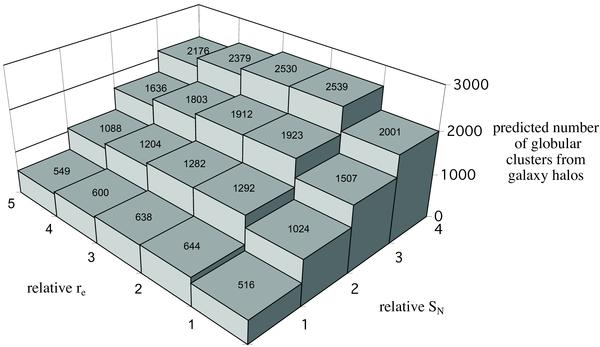Fig. 12

An illustration of the expected contamination from globular clusters in galaxy halos near the center of A1185 and its dependence on the assumed properties of those systems. The globular cluster population of each galaxy in Table 1 was simulated by assuming that its radial distribution is described by the same Sersic index n as the galaxy’s stellar light, but with an effective radius that is some multiple of the galaxy’s (the axis labelled “relative re”). Similarly, the number of globular clusters belonging to each galaxy was allowed to vary relative to the expected number if the galaxy had a normal specific frequency for its luminosity as summarized in Peng et al. (2008) (the axis labelled “relative SN”). Hence, for example, a relative re = 2 means that the effective radius of a galaxy’s globular cluster distribution was assumed to be twice that of its stellar distribution, and an “effective SN = 3” means that a galaxy was assigned three times the “normal” number of globular clusters for a galaxy of its luminosity. Additional details of the simulations are discussed in the text. The third axis shows the average number of contaminating globular clusters brighter than IF814W ≤ 27.3 mag predicted to fall within the central ACS field in A1185 based on many simulations. Although the relative re and SN were allowed to vary independently for each galaxy, for clarity the results shown in this figure assume constant values of relative re and relative SN for all galaxies. These simulations demonstrate that the large number of globular clusters seen in our ACS field cannot all reside in galaxy halos unless most or all of the galaxies in Table 1 have unusually rich globular cluster systems.
Current usage metrics show cumulative count of Article Views (full-text article views including HTML views, PDF and ePub downloads, according to the available data) and Abstracts Views on Vision4Press platform.
Data correspond to usage on the plateform after 2015. The current usage metrics is available 48-96 hours after online publication and is updated daily on week days.
Initial download of the metrics may take a while.


